Churchkhela (Georgian: ჩურჩხელა) is a traditional sausage-shaped candy made by repeatedly dipping a long string of nuts in tatara – a mixture of flour, sugar and Badagi (concentrated fresh grape juice). Georgians usually make Churchkhela in the Autumn when grapes and nuts are harvested. Churchkhela can also be made with dried fruit (such as peach, apple or plum) and pumpkin seeds.
In this recipe we show how to make churchkhela with walnuts and also with hazelnuts. The quantities of nuts are sufficient to make 4 churchkhelas with walnuts and 4 churchkhelas with hazelnuts.
Ingredients: 50 walnuts, up to 100 hazelnuts, 1.5 liters of badagi (click here for a step-by-step recipe), 300 grams of flour and 3 tbs of sugar. The quantities for badagi, flour and sugar are enough for one coating of the nuts. The nuts will require at least two coatings (see note at the end of the recipe). You will also need a needle and thread.
Preparation (walnuts): Shell the walnuts. Add to a hot pan and heat on a low-medium heat for 2-3 minutes. Be careful not to burn them.
Remove from the heat and allow to cool a little and then separate them into halves. Churchkhela can also be made with walnut quarters or eighths (which is the most common).
Preparation (hazelnuts): Shell the hazelnuts. Add to a hot pan and heat on a low-medium heat for 2-3 minutes.
Stir continuously with a wooden spoon to loosen the skins. Remove from the heat and allow to cool a little. Remove the skins from the warm nuts with your fingers.
Preparation (threading the walnuts – for churchkhela made with walnuts): Thread a needle with a 30-inch length of strong thread. With the flat side of the nuts facing up, thread 25 walnut halves onto the thread. Cut the thread from the needle and knot the ends. The walnut strands should be dried in the sun before the next stage of the process to prevent the growth of mold.
Preparation (threading the hazelnuts – for churchkhela made with hazelnuts): Thread a needle with a 30-inch length of heavy-duty thread. Pierce the center of each hazelnut with the needle. Continue until 25 have been threaded. Cut the thread from the needle and knot the ends. The threaded hazelnut strands should be dried in the sun before the next stage of the process to prevent the growth of mold.
The pictures below show strands we prepared using walnut halves, quarters and eighths, and whole hazelnuts.
Preparation (tatara): Add the flour and sugar to a bowl.
Gradually add up to 500 ml of Badagi (click here to see how to make Badagi) and mix with a wooden spoon.
Once the flour, sugar and badagi have been mixed with a spoon, use an electric blender to ensure that the mixture is absolutely smooth.
Add 1 liter of badagi to a deep cast iron pot and gradually add the flour/sugar/badagi mixture.
Stir thoroughly. It should look like the picture below.
Heat on a high temperature, vigorously stirring all of the time. Bring to the boil. Turn the heat down to a low temperature and continue to stir for 8-10 minutes. During that time it will thicken and you should test it to make sure that it does not taste of flour.
The resulting mixture is called tatara and its consistency should look like the picture below.
Keeping hold of one end of the thread, carefully place a strand of threaded nuts (walnuts or hazelnuts) into the tatara.
Use a wooden spoon to cover the threaded nuts.
Ensure that all of the nuts are coated with tatara.
Remove the churchkhela from the tatara.
If the tatara has been made correctly the churchkhela should not drip. Immediately hang the churchkhela. A pole placed between two chairs is ideal. Repeat the coating process with each strand of threaded nuts.
Leave the churchkhela to dry in the sunshine for 3 to 4 days, until the strands are no longer sticky to the touch. After 3 to 4 days make more tatara and repeat the dipping process. Use the recipe above but increase the quantity of badagi from 1.5 to 2 liters. Leave the churchkhela to dry in the sunshine for 3 to 4 days. Repeat the coating process one or more times if you prefer thicker churchkhelas. The churchkhelas can be eaten once they are dry to the touch but can also be wrapped in towels in a wooden box and allowed to mature for 2 to 3 months. When stored, the churchkhelas will develop a thin layer of powdery sugar – this is normal.
Serving: Pull the string from the churchkhela, hold and nibble!
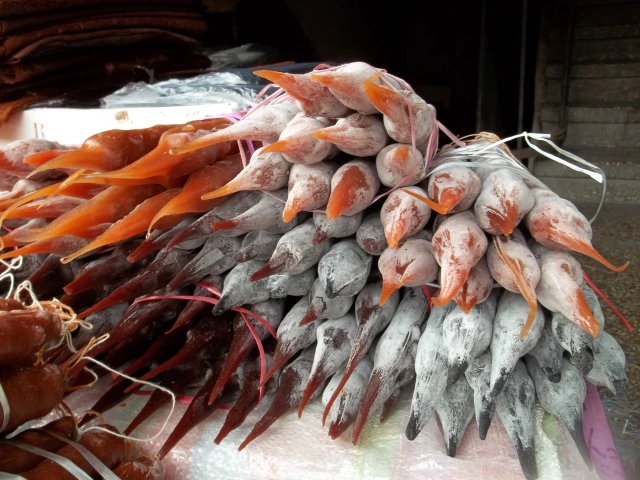
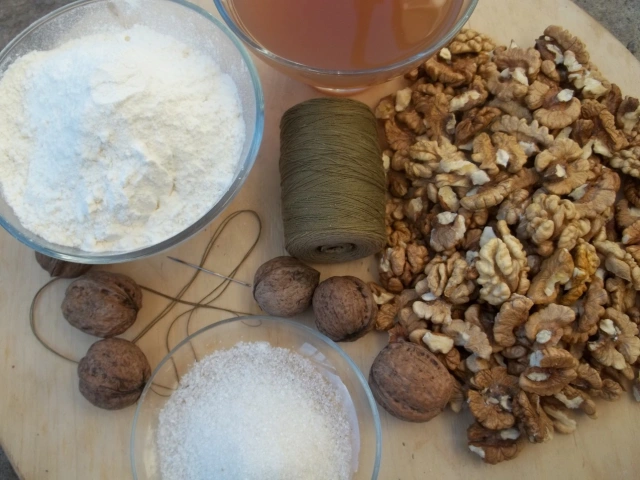
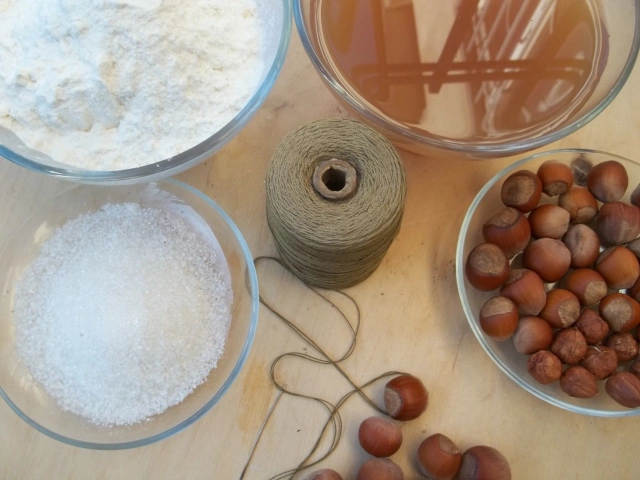
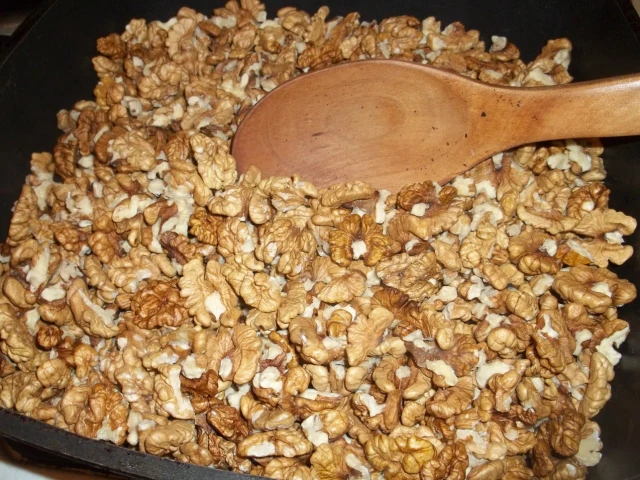
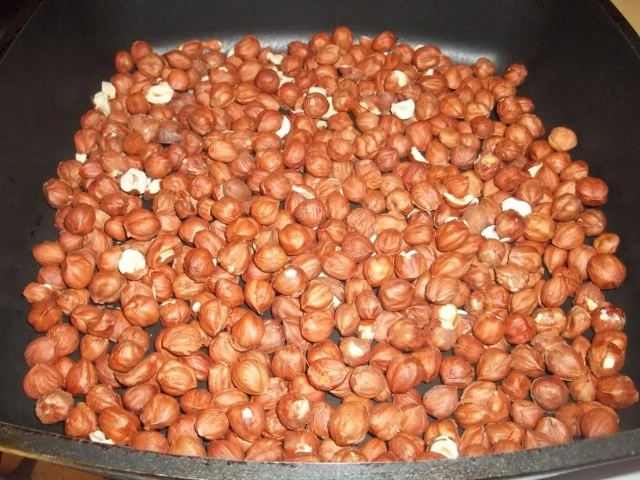
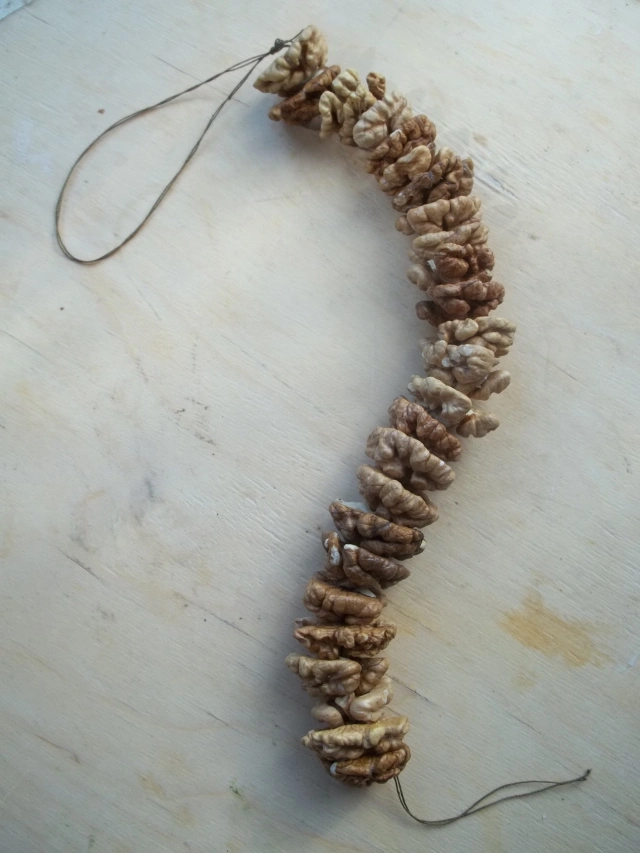
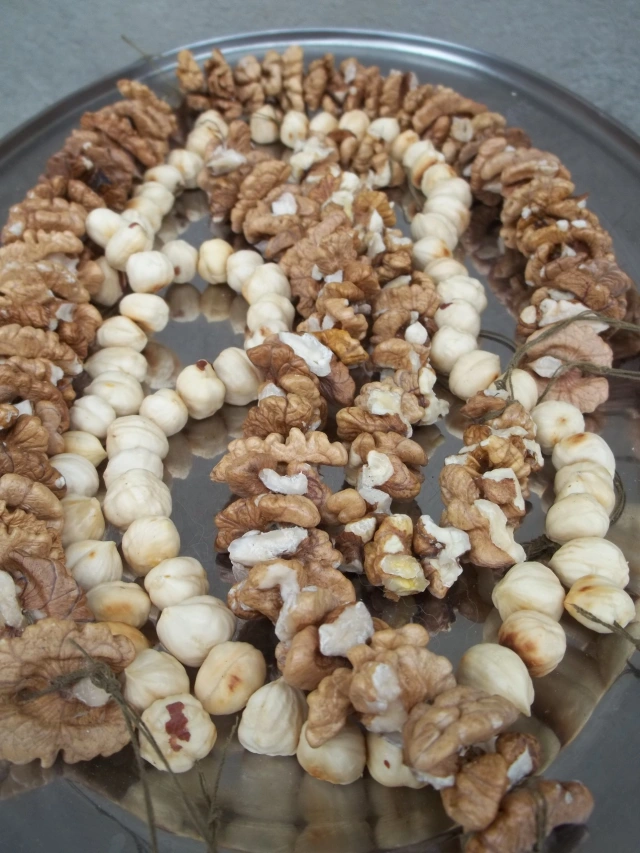
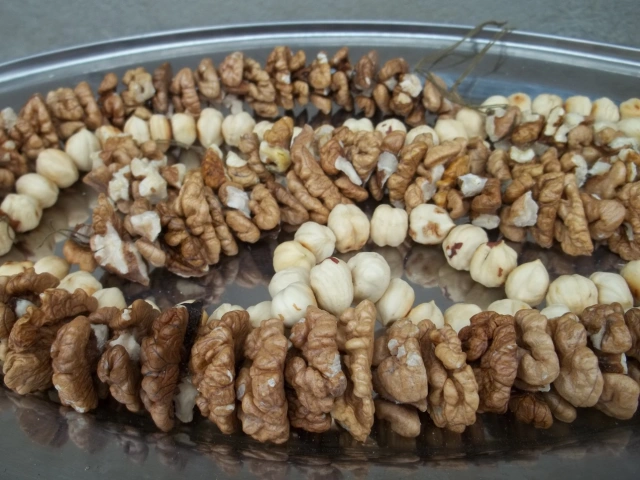
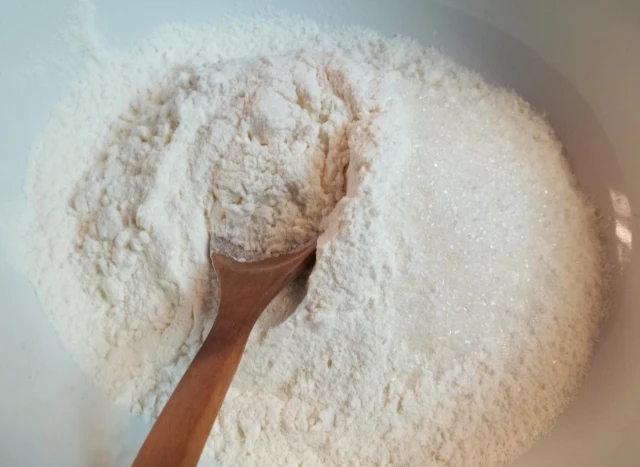
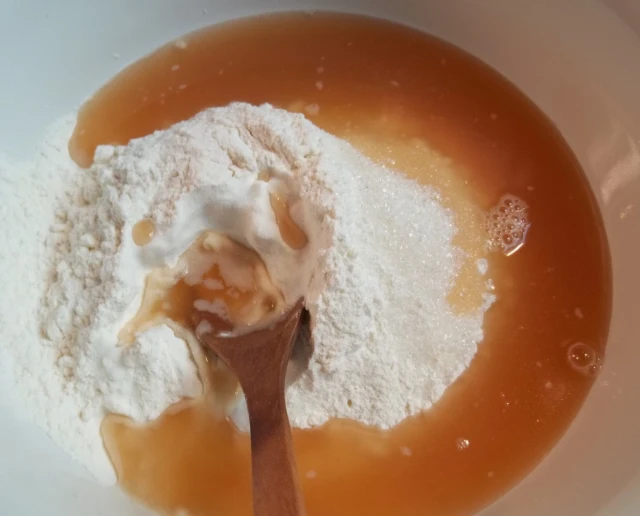
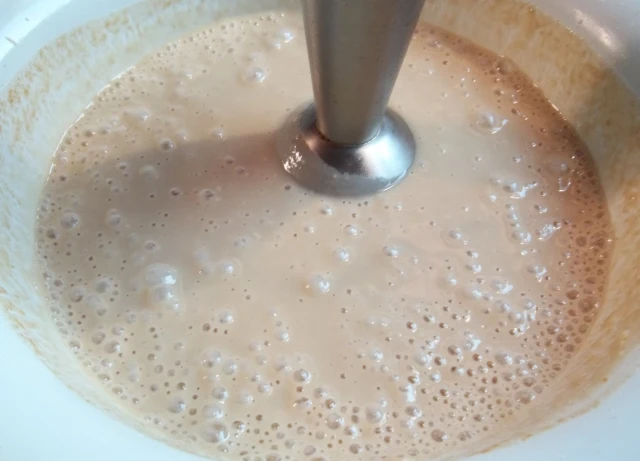

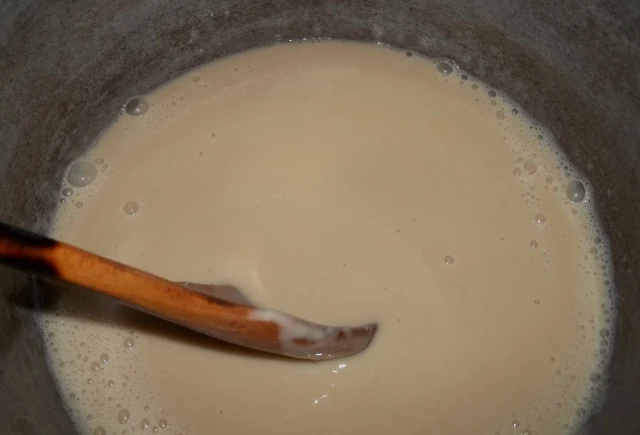
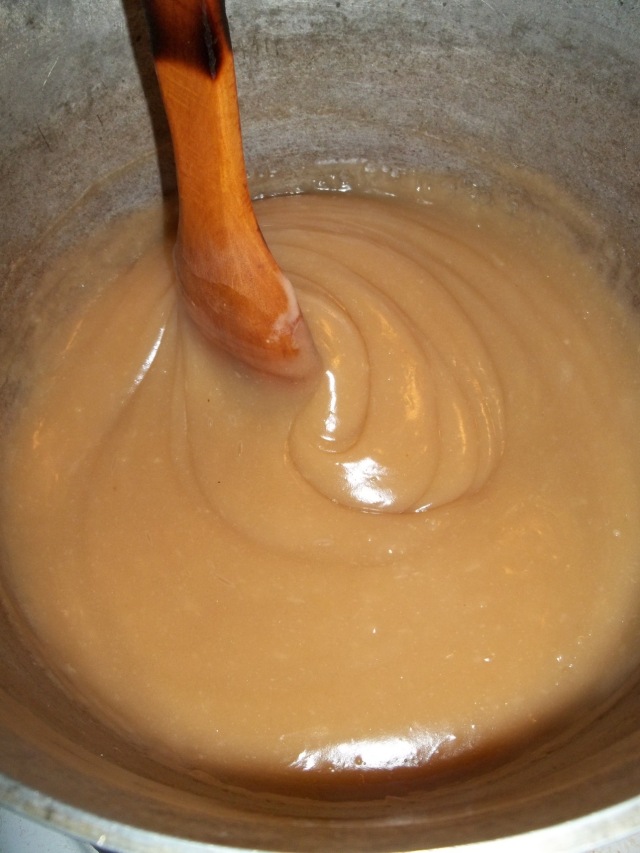
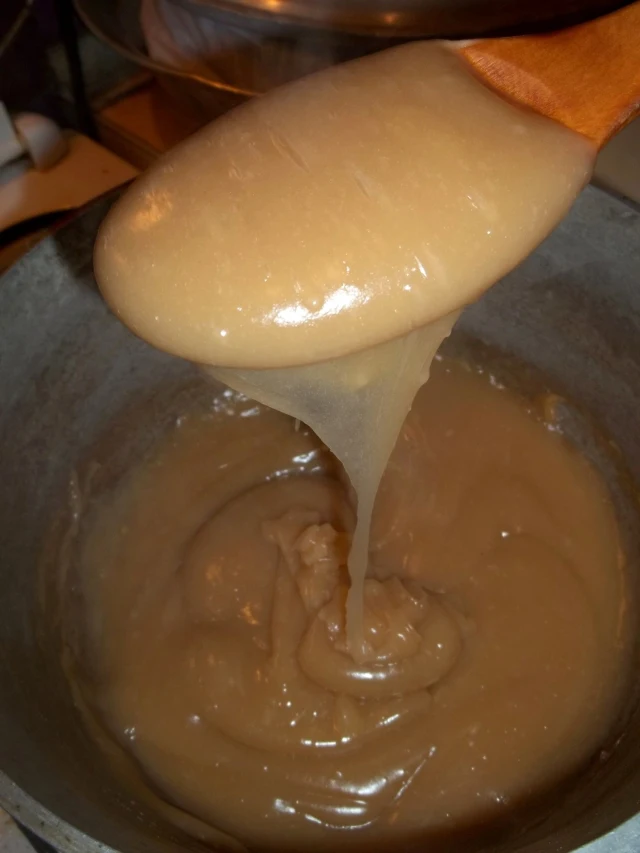
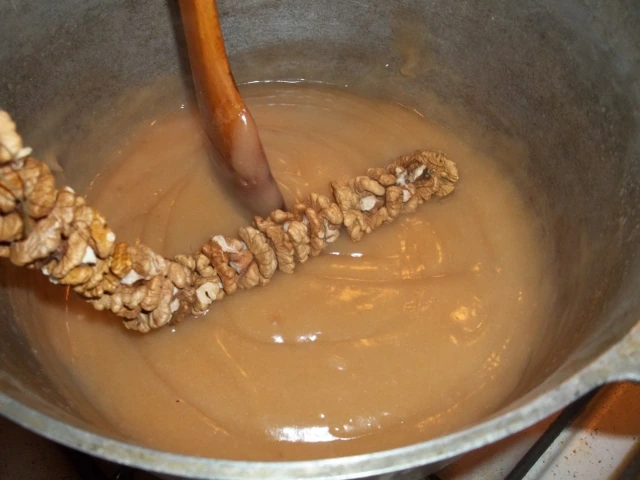
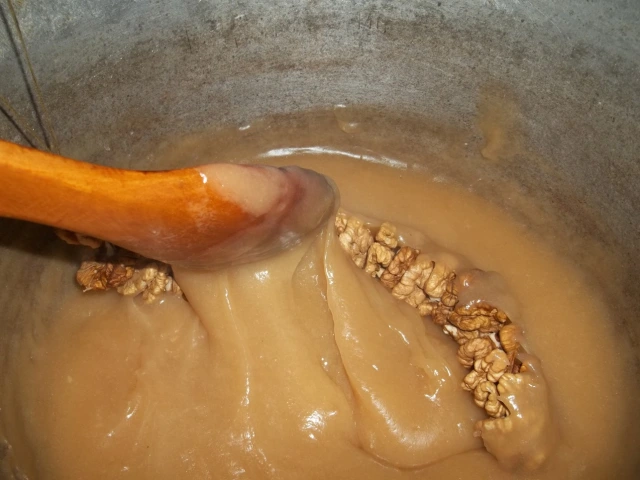
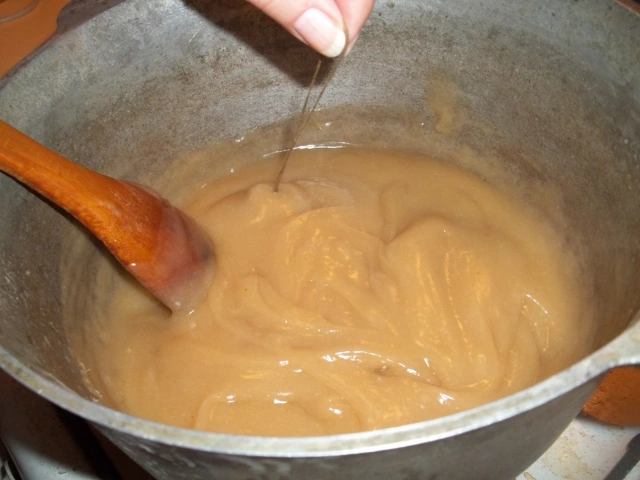
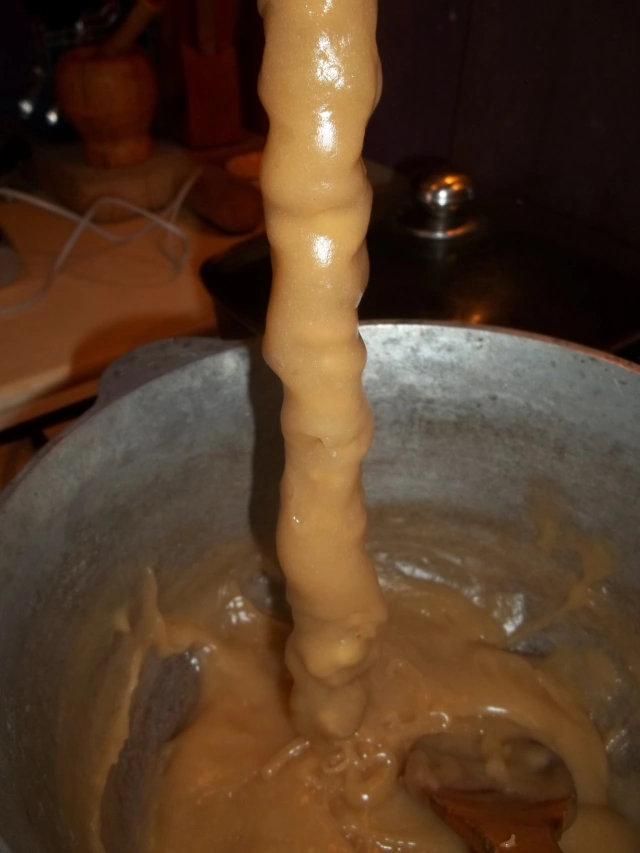
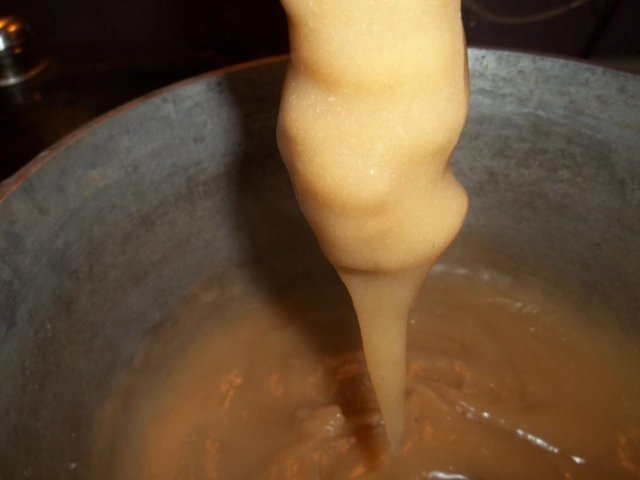
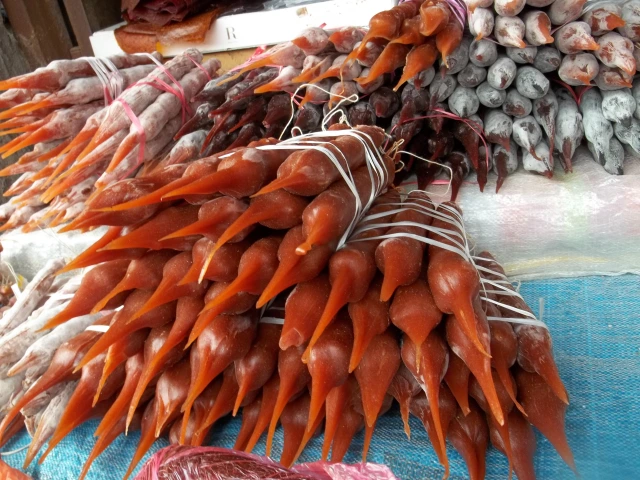
No comments:
Post a Comment